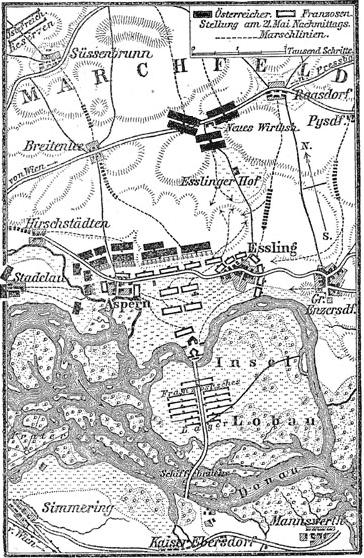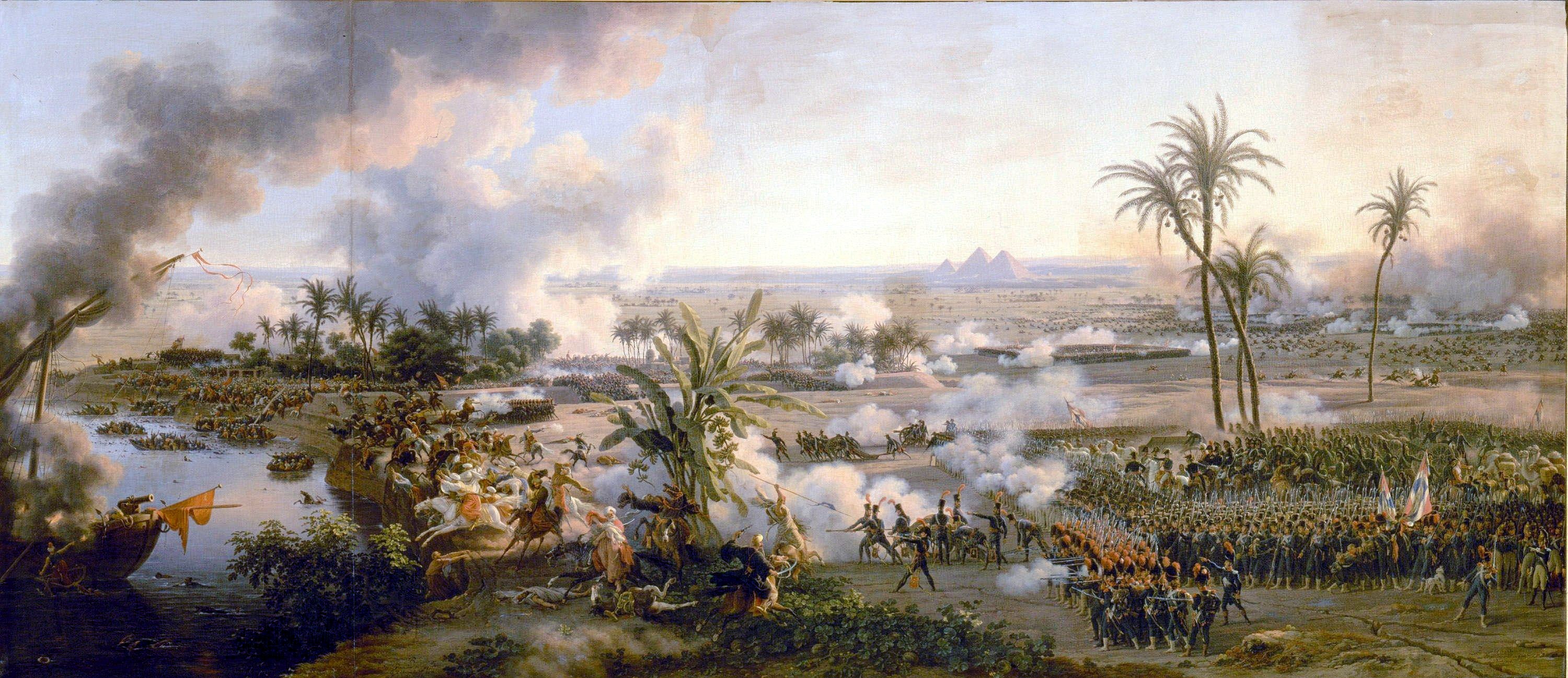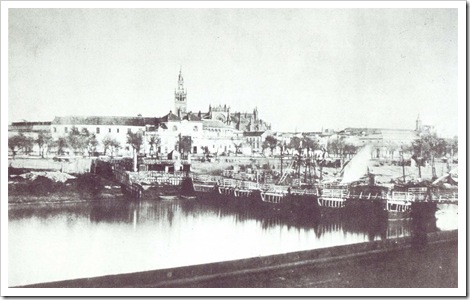|
The Battle (Rambaud Novel)
''The Battle'' (French: ''La Bataille'') is a historical novel by the French author Patrick Rambaud that was first published in 1997. The English translation by Will Hobson appeared in 2000. The book describes the 1809 Battle of Aspern-Essling between the French Empire under Napoleon and the Austrian Empire. The action in the novel follows closely historical observations and descriptions as seen from the French perspective. ''La Bataille'' is the first book of a trilogy by Rambaud about the decline of Napoleon, describing his first personal defeat in a European battle; the other two books cover Napoleon’s defeat in Russia in ''The Retreat'' and his banishment at Elba in ''Napoleon’s Exile''. Historical background In the War of the Fifth Coalition Austria and Great Britain sought to reduce French dominance on the continent. Napoleon, however, succeeded militarily in Southern Germany and entered Vienna on May 13, 1809. The main Austrian army under Archduke Charles retreated t ... [...More Info...] [...Related Items...] OR: [Wikipedia] [Google] [Baidu] |
Patrick Rambaud
Patrick Rambaud (born 21 April 1946) is a French writer. Life Born in Paris, France, with Michel-Antoine Burnier, he wrote forty pastiches, (satirical novels). They wrote ''Le Journalisme sans peine'' (Editions Plon, 1997). In 1970, he help found the iconic magazine ''Actuel''. Awards Rambaud received these awards for his book '' The Battle'': * 1997 Prix Goncourt * 1997 Grand Prix du Roman of the Académie française Works English translations *'' The Battle'' Translators Will Hobson. Grove Press. 2001. . *''The Retreat The Retreat, commonly known as the York Retreat, is a place in England for the treatment of people with mental health needs. Located in Lamel Hill in York, it operates as a not for profit charitable organisation. Opened in 1796, it is famous ...'' Translators Will Hobson. Grove Press. 2001. . * Bibliography * ''Les Complots de la liberté'' - 1832, Grasset, 1976 * ''Parodies par Michel-Antoine Burnier & Patrick Rambaud'', Balland, 1977, (194 pages with ... [...More Info...] [...Related Items...] OR: [Wikipedia] [Google] [Baidu] |
André Masséna
André Masséna, Prince of Essling, Duke of Rivoli (born Andrea Massena; 6 May 1758 – 4 April 1817) was a French military commander during the French Revolutionary Wars and the Napoleonic Wars.Donald D. Horward, ed., trans, annotated, The French Campaign in Portugal, An Account by Jean Jacques Pelet, 1810-1811 (Minneapolis, MN, 1973), 501. He was one of the original 18 Marshals of the Empire created by Napoleon I, with the nickname (the Dear Child of Victory). Many of Napoleon's generals were trained at the finest French and European military academies, however Masséna was among those who achieved greatness without the benefit of formal education. While those of noble rank acquired their education and promotions as a matter of privilege, Masséna rose from humble origins to such prominence that Napoleon referred to him as "the greatest name of my military empire". His military career is equaled by few commanders in European history. In addition to his battlefield successes ... [...More Info...] [...Related Items...] OR: [Wikipedia] [Google] [Baidu] |
Louis-François Lejeune
Louis-François, Baron Lejeune (3 February 1775 in Strasbourg – 29 February 1848) was a French general, painter, and lithographer. His memoirs have frequently been republished and his name is engraved on the Arc de Triomphe. Life He studied painting in the studio of Pierre-Henri de Valenciennes, alongside Jean-Victor Bertin, but left the studio to volunteer in the Compagnie des arts de Paris in 1792. He received his baptism of fire in the battle of Valmy later that year. He became a sergeant in the 1st Arsenal battalion and in 1793 moved to the artillery at La Fère, assisting in the sieges of Landrecies, Le Quesnoy and Valenciennes. At Valenciennes he became aide-de-camp to General Jacob then, as a lieutenant on attachment to the engineers, took part in the 1794 Holland campaign and the 1795 campaign. Called to the depot in 1798, he succeeded brilliantly in his exams and was made a captain on attachment to the engineers. He became aide-de-camp to Marshal Berthier in ... [...More Info...] [...Related Items...] OR: [Wikipedia] [Google] [Baidu] |
Hecatomb
In ancient Greece, a hecatomb (; ; grc, ἑκατόμβη ''hekatómbē'') was a sacrifice of 100 cattle (''hekaton'' = one hundred, ''bous'' = bull) to the Greek gods. In practice, as few as 12 could make up a hecatomb. Although originally the sacrifice of a hundred oxen in the religious ceremonies of the Greeks and Romans; later "hecatomb" came to describe a large number of any kind of animals devoted for sacrifice. Figuratively, "hecatomb" is used to describe the sacrifice or destruction by fire, tempest, disease or the sword of any large number of persons or animals; and also of the wholesale destruction of inanimate objects, and even of mental and moral attributes. Ancient Greece Hecatombs were offered to Greek gods Hera, Athena, and Apollo during special religious ceremonies. [...More Info...] [...Related Items...] OR: [Wikipedia] [Google] [Baidu] |
Treaty Of Schönbrunn
The Treaty of Schönbrunn (french: Traité de Schönbrunn; german: Friede von Schönbrunn), sometimes known as the Peace of Schönbrunn or Treaty of Vienna, was signed between France and Austria at Schönbrunn Palace near Vienna on 14 October 1809. The treaty ended the Fifth Coalition during the Napoleonic Wars, after Austria had been defeated at the decisive Battle of Wagram on 5–6 July. Prelude During the Peninsular War and the Spanish resistance against Napoleon, Austria had tried to reverse the 1805 Peace of Pressburg by sparking national uprisings in the French-occupied territories of Central Europe (most notably the Tyrolean Rebellion against Napoleon's Bavarian allies). These attempts ultimately failed, after French forces occupied Vienna in May 1809. The Austrians under Archduke Charles were able to repulse them at the Battle of Aspern on 21-22 May; however, Napoleon withdrew his forces and crushed Charles' army at Wagram a few weeks later. The archduke had to sig ... [...More Info...] [...Related Items...] OR: [Wikipedia] [Google] [Baidu] |
Battle Of Wagram
The Battle of Wagram (; 5–6 July 1809) was a military engagement of the Napoleonic Wars that ended in a costly but decisive victory for Emperor Napoleon's French and allied army against the Austrian army under the command of Archduke Charles of Austria-Teschen. The battle led to the breakup of the Fifth Coalition, the Austrian and British-led alliance against France. Wagram was the largest battle in European history up to its time. In 1809, the French military presence in the Confederation of the Rhine was diminished as Napoleon transferred a number of soldiers to fight in the Peninsular War. As a result, the Austrian Empire saw its chance to recover some of its former sphere of influence and invaded the Kingdom of Bavaria, a French ally. Recovering from his initial surprise, Napoleon beat the Austrian forces and occupied Vienna at the beginning of May 1809. Despite the string of sharp defeats and the loss of the empire's capital, Archduke Charles salvaged an army, with which ... [...More Info...] [...Related Items...] OR: [Wikipedia] [Google] [Baidu] |
Essling
Essling Essling entry in the Viennese government's history wiki (German) () is part of Donaustadt, the 22nd district of Vienna. History The oldest form of the place name was Ezzelaren. The Eslarn family had important roles in the Vienna city administration. Konrad von Eslarn was mayor of Vienna in 1287. From about 1590, the place name changed into Ehsling or Essling. The area is known for the Battle of Aspern-Essling, which was fought nearby between May 21 and May 22, 1809.Sports clubs The district is also known for their own soccer-team called SV Essling, which was founded in 1931, currently playing in the minor leagues.Sights [...More Info...] [...Related Items...] OR: [Wikipedia] [Google] [Baidu] |
Aspern
Aspern () is part of Donaustadt, the 22nd district of Vienna, Austria. History The area is known because of the Battle of Aspern-Essling, which was fought in the nearby Lobau on 21 and 22 May 1809. In that battle, the Austrian army, led by Archduke Charles, repelled an advance by Napoleon; it was the closest the French emperor had come to being defeated since his rise to power. In 1858, a large stone lion sculpture was installed in front of St. Martin's Church to commemorate the battle and the Austrian soldiers who died to repel Napoleon. In 1904, the formerly independent village was incorporated into Vienna as part of the 21st district, Floridsdorf. Only in 1946 did it become part of the newly created 22nd district, Donaustadt. In 1912, the Aspern Airfield was inaugurated. It remained the center of Austrian civil and military aviation until World War II. After the war, it was used by Soviet occupation forces. Replaced by Vienna International Airport near Schwechat in 1954, it ... [...More Info...] [...Related Items...] OR: [Wikipedia] [Google] [Baidu] |
Pontoon Bridge
A pontoon bridge (or ponton bridge), also known as a floating bridge, uses float (nautical), floats or shallow-draft (hull), draft boats to support a continuous deck for pedestrian and vehicle travel. The buoyancy of the supports limits the maximum load that they can carry. Most pontoon bridges are temporary and used in wartime and civil emergencies. There are permanent pontoon bridges in civilian use that can carry highway traffic. Permanent floating bridges are useful for sheltered water crossings if it is not considered economically feasible to suspend a bridge from anchored piers. Such bridges can require a section that is elevated or can be raised or removed to allow waterborne traffic to pass. Pontoon bridges have been in use since ancient times and have been used to great advantage in many battles throughout history, such as the Battle of Garigliano (1503), Battle of Garigliano, the Battle of Oudenarde, the Operation Plunder, crossing of the Rhine during World War II, the ... [...More Info...] [...Related Items...] OR: [Wikipedia] [Google] [Baidu] |
Lobau
The Lobau () is a Vienna floodplain on the northern side of the Danube in Donaustadt and partly in Großenzersdorf, Lower Austria. It has been part of the Danube-Auen National Park since 1996 and has been a protected area since 1978. It is used as a recreational area and is known as a site of nudism. There is also an oil harbour, and the Austrian Army used the Lobau as a training ground. In addition to the water coming from the Alps through the Wiener Hochquellenwasserleitung, the Lobau is a source of groundwater for Vienna. The ''Donauinsel'' (Vienna Danube Island) borders the Lobau. History The Lobau was the site of the Battle of Aspern-Essling in 1809, the first major defeat suffered by Napoléon, which was inflicted on him by an Austrian army led by Archduke Charles, and of the Battle of Wagram, a victory for Napoleon that followed two months later. During the Oil Campaign of World War II, the Lobau oil refinery was bombed beginning on August 22, 1944. Impact on the env ... [...More Info...] [...Related Items...] OR: [Wikipedia] [Google] [Baidu] |
Danube
The Danube ( ; ) is a river that was once a long-standing frontier of the Roman Empire and today connects 10 European countries, running through their territories or being a border. Originating in Germany, the Danube flows southeast for , passing through or bordering Austria, Slovakia, Hungary, Croatia, Serbia, Romania, Bulgaria, Moldova, and Ukraine before draining into the Black Sea. Its drainage basin extends into nine more countries. The largest cities on the river are Vienna, Budapest, Belgrade and Bratislava, all of which are the capitals of their respective countries; the Danube passes through four capital cities, more than any other river in the world. Five more capital cities lie in the Danube's basin: Bucharest, Sofia, Zagreb, Ljubljana and Sarajevo. The fourth-largest city in its basin is Munich, the capital of Bavaria, standing on the Isar River. The Danube is the second-longest river in Europe, after the Volga in Russia. It flows through much of Central and Sou ... [...More Info...] [...Related Items...] OR: [Wikipedia] [Google] [Baidu] |


.jpg)

_059b.jpg)



